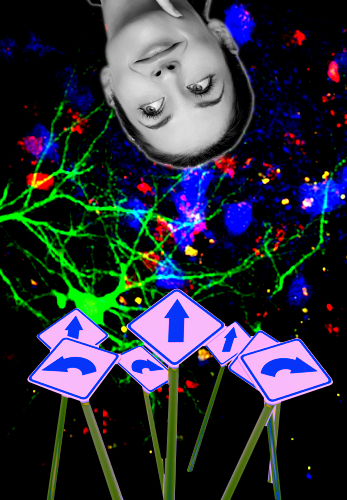Scans show gender direction differences
 There are a number of social stereotypes about finding things, and new research suggests they could have a neuroscientific basis.
There are a number of social stereotypes about finding things, and new research suggests they could have a neuroscientific basis.
“Women are faster at finding things in the house, and men are faster at finding the house,” says Norwegian neuroscience researcher Carl Pintzka.
His team at the Norwegian University of Science and Technology (NTNU) have explored the idea that men’s statistically better performance when it comes to specific spatial tasks is linked to testosterone.
They did this by comparing men with women given doses of testosterone, testing how well they found their way in a virtual environment.
Using fMRI, the researchers that men in the study had a greater ability to find and take shortcuts and orient themselves using cardinal directions.
The scan even showed that men used a different part of the brain than the women in the study.
But when women were given a drop of testosterone under their tongue, several showed an enhanced ability to orient themselves in the four cardinal directions.
“Men’s sense of direction was more effective. They quite simply got to their destination faster,” said Dr Pintzka, from NTNU’s Department of Neuroscience.
The MRI scans were used to show whether there were any differences in brain activity when men and women orient themselves.
Using 3D goggles and a joystick, the participants had to orient themselves in a very large virtual maze while their brain activity was continuously recorded.
Eighteen men and 18 women were given an hour to learn the layout of the maze without the scanner. Then, under MRI, they were given 30 seconds for each of 45 navigation tasks. The tasks included goals like “find the yellow car” from different starting points.
The men solved 50 per cent more of the tasks than the women.
According to Pintzka, it was because women and men have different navigational strategies.
“If they’re going to [a given destination]... men usually go in the general direction where it’s located. Women usually orient themselves along a route to get there, for example, ‘go past the hairdresser and then up the street and turn right after the store’,” he says.
The study found that relying on the cardinal directions was more efficient because it is more flexible, allowing the destination to be reached faster.
The fMRI images showed men used the hippocampus more when they navigated, whereas women used their more of their frontal areas.
“That’s in sync with the fact that the hippocampus is necessary to make use of cardinal directions,” Pintzka says.
“In ancient times, men were hunters and women were gatherers. Therefore, our brains probably evolved differently.”
In the second phase of the study, women were given testosterone just before they went to solve the maze puzzles.
Forty-two women were divided into two groups, with 21 receiving a drop of placebo, and 21 getting a drop of testosterone under the tongue.
The addition of testosterone brought some intriguing results.
“We hoped that they would be able to solve more tasks, but they didn’t,” Pintzka said.
“But they had improved knowledge of the layout of the maze, and they used the hippocampus to a greater extent, which tends to be used more by men for navigating.”
He said the study could have implications in a number of areas, including research on treatments for Alzheimer’s disease.
“Almost all brain-related diseases are different in men and women, either in the number of affected individuals or in severity. Therefore, something is likely protecting or harming people of one sex. Since we know that twice as many women as men are diagnosed with Alzheimer’s disease, there might be something related to sex hormones that is harmful,” says Pintzka.








 Print
Print